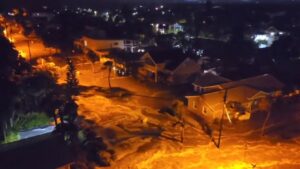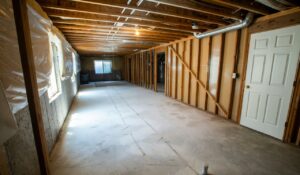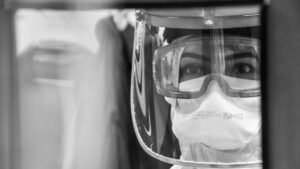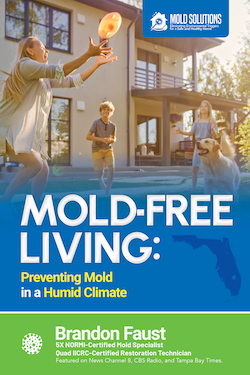While I may be in England right now, my attention is on all of you in Clearwater. It was difficult to watch the videos that were coming in live. I am five hours ahead so I saw the devastion as it was happening.
As many of you know, I have some experience in water damage, mold removal and storm clean up. I spent time in Louisiana after two hurricanes and have gone through a a number of floods and hurricanes in Tampa Bay.
I want to share some crucial safety-first steps to guide you through the aftermath of the flooding. Here’s what you should do before starting any cleanup:
Electrical Safety First
If your home still has power, turn off the main breaker before entering any flooded areas. If you suspect water has reached your electrical system, avoid touching anything until a licensed electrician confirms it’s safe.
Personal Protection Gear
Always wear gloves, protective clothing, and waterproof boots when handling water-damaged materials. Use an N95 mask to avoid breathing in mold spores or harmful dust that may be in the air.
Document Everything
Before you clean or remove anything, take pictures of all damage. Photograph every room, wall, floor, wet belongings, the exterior of the home, and even your car if it’s been flooded. This will help immensely with your insurance claims.
Ventilate Your Home
If possible, open all windows and doors to get air flowing. This helps reduce moisture and lowers the risk of mold growing rapidly. Use fans and dehumidifiers if you have access to them, but ensure all electrical devices are safe to use! Air flow helps.
Remove Saturated Porous Items
Anything that’s porous and soaked (like carpets, furniture, clothes) needs to be thrown out. You are dealing with Category 3 Black Water. If it’s pourous, it pretty much needs to go. If something is highly sentimental, bag it up and see if it can be professionally cleaned later, but there are no guarantees.
Clean Non-Porous Surfaces
Use bleach to clean solid surfaces like countertops, tiles, and plastics. If you don’t have bleach, other alternatives include soap and water, white vinegar, or pool chlorine (diluted to 10-15% chlorine, 80-85% water—always wear gloves!).
Perform a Flood Cut if Possible
If the water has receded and the floors are no longer flooded, use a knife, box cutter, or power tools to make a flood cut—cut 2 feet above the waterline on the walls. Remove any soaked insulation, bag it, and disinfect the visible framing and drywall with bleach or another cleaner like Vital Oxide. Repeat in every room that has been affected by water.
Check for Hidden Moisture
Water can hide in places you can’t see, like behind walls and cabinets, or under floors. If you have access to a moisture meter (some hardware stores lend them out), check for damp spots to prevent mold growth.
Insurance Tips: Know Your Coverage
Home Insurance typically covers water damage from leaks or water intrusion, but not flooding. Flood Insurance covers damage from rising water. You’ll need to notify both insurers.
Important: When reporting the damage to your home insurance, use the term “WATER DAMAGE,” not “mold.”
Claiming “mold” may limit your coverage to $10k, but water damage coverage can extend up to the full amount of your policy. Once your water damage claim is open, you can have a mold inspector like Matthew Fleming report any mold found, which can then be added as additional coverage.
Proper Drying with Fans and Dehumidifiers
You’ll need multiple fans and dehumidifiers to ensure your home is fully dried out. Just because it looks dry doesn’t mean it’s safe—mold can grow with only 20% moisture content in materials and at 60% relative humidity in the air if it’s not dried out quickly. Use moisture meters to confirm everything is truly dry.
Remember, if your home smells damp or musty, microbial growth has already started. In this case, you will also need duct cleaning and sanitization. Real Duct Cleaning is a great company for this service.
Consider Professional Help
If the water damage is extensive, it’s worth calling in licensed professionals.
Mold removal and water damage restoration are complex and can be risky without the right equipment and expertise. The health of you and your family is the most important thing.
I know this is a lot to process, but I’m here to help however I can. Feel free to ask any questions below, and I’ll do my best to guide you through. Though I’m currently in England, my heart is with all of you in Clearwater. Stay strong!
Brandon










